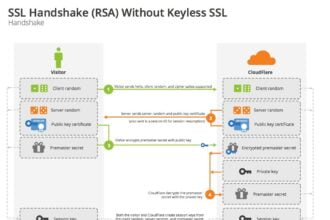With so many video conferencing options available, it can be difficult to decide on the right solution for your enterprise. According to a recently published study by the Wainhouse Research Group, enterprises are struggling to keep up with an increasingly changing workplace. The study shows that by 2020, Millenials will make up at least half of the global workforce, and with that demographic change will come differences in procedures, tools, and working preferences.
With so many video conferencing options available, it can be difficult to decide on the right solution for your enterprise. According to a recently published study by the Wainhouse Research Group, enterprises are struggling to keep up with an increasingly changing workplace. The study shows that by 2020, Millenials will make up at least half of the global workforce, and with that demographic change will come differences in procedures, tools, and working preferences. Additionally, today’s workers rely increasingly on collaboration to complete tasks and projects, as the process is not only more fulfilling, but yields higher quality results. Improving avenues for interoffice communication and opportunities for collaboration, even with the percentage of a company that works remotely, is becoming key to both efficiency and worker satisfaction. To that end, companies are shifting focus in the workplace to increasing telepresence across departments. Video conferencing technology is becoming increasingly affordable and easier to implement. But how does an enterprise keep video conferencing secure while still offering its employees the benefits it can provide?

Security and Cloud Solutions
Because the demand is there but the budget for improvement is often harder to obtain, many enterprises are turning to cloud served telepresence solutions. Cloud hosted video conferencing services can offer more flexibility and options for companies interested in saving money and bringing video conferencing to laptops and mobile devices, but according to TechRadar.com, popular perception of cloud video hosting conjures up images of free online video calls which were never meant to be used for business level conversations where sensitive information might be exchanged. In practice, enterprise level cloud video conferencing is far more secure than many people realize.
Because the video is often archived for review or use at a later time, secure data storage is key. Standard equipment and data storage are not recommended, as these machines are often vulnerable to internal or external intervention. According to an article on Howstuffworks.com, data storage should be separated from other networks, as well. Offsite hosted video conferencing services which offer cloud hosting and storage solutions often store data in special locked down facilities, with access to the data protected by 24-hour surveillance. Other security options are used in such facilities as well, including key cards and biometric scanners, to ensure that there is no unauthorized access to the data. But the data storage is not the only area of concern when it comes to video conferencing security.
Securing Transmitted Data
The number one area where video conferencing security is that of data transmission. Video conference data must travel across many networks, both public and private, to reach its end users, leaving the data vulnerable to interception. The main methods used to combat this vulnerability are data encryption and network security. Companies providing video conferencing services, such as Blue Jeans Network, employ high levels of encryption and techniques that maintain the connections across networks without compromising the encrypted data.
Most commercial video conferencing systems and services like Blue Jeans employ 128-bit AES encryption, which means that calls between systems use 128-bit encryption keys which are generated at the beginning of each video session. According to a 2012 article in the EE Times, the 128-bit AES key is so strong that a supercomputer would take 1 billion billion years, or longer than the universe has been in existence, to crack it using a brute force attack. It appears that video conferencing is more secure than popular myth would have us believe.
Get Expert Advice
When your enterprise’s data security is in question, it pays to be cautious. When in doubt, it’s always best to seek the opinions of information technology security professionals. Your company’s IT department will know what services and applications will work with your existing infrastructure, and if a particular company’s cloud video conferencing solutions are in line with your business needs. While most company’s video conferencing is managed by the AV department, in this case it would pay to consult both departments, not only to ensure that the new services and infrastructure will not only mesh with what your business has in place but also to prevent the new devices from being set up without necessary security options in place.
Many companies are searching for ways to keep their employees and departments connected and engaged, whether it’s from across the country or the world. Adding more video conferencing options to allow remote workers more opportunity for collaboration, and thus keeping your enterprise current with employee preferences and demand, can save time, travel expenses, and efficiency. While you may opt for a cloud solution to give your employees added mobility, it’s important to keep any video data secure. By using a reputable commercial cloud hosted telepresence company , being aware of the security measures it takes, and making sure to consult with both the AV department and the IT department before implementing the service, you can ensure your company gets the video conferencing solutions it needs without compromising security.









